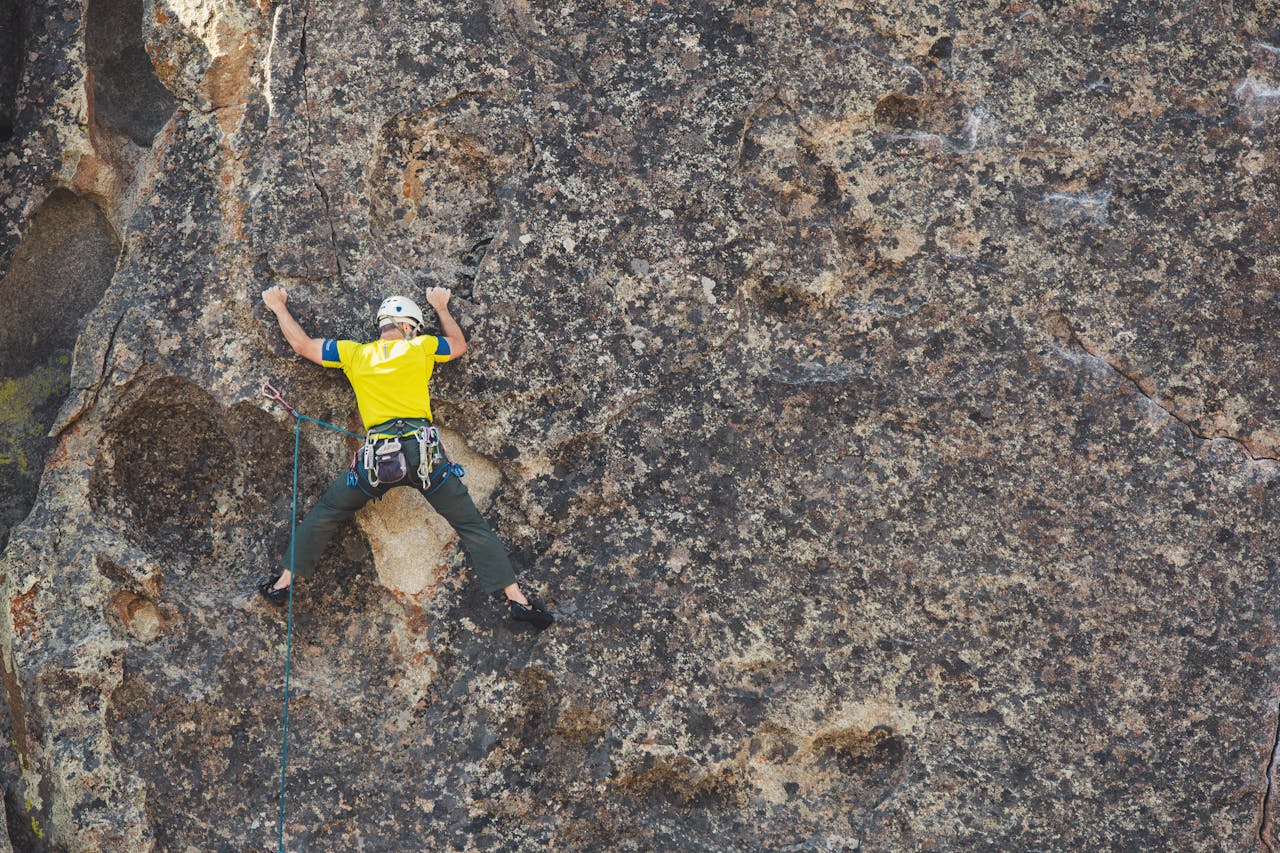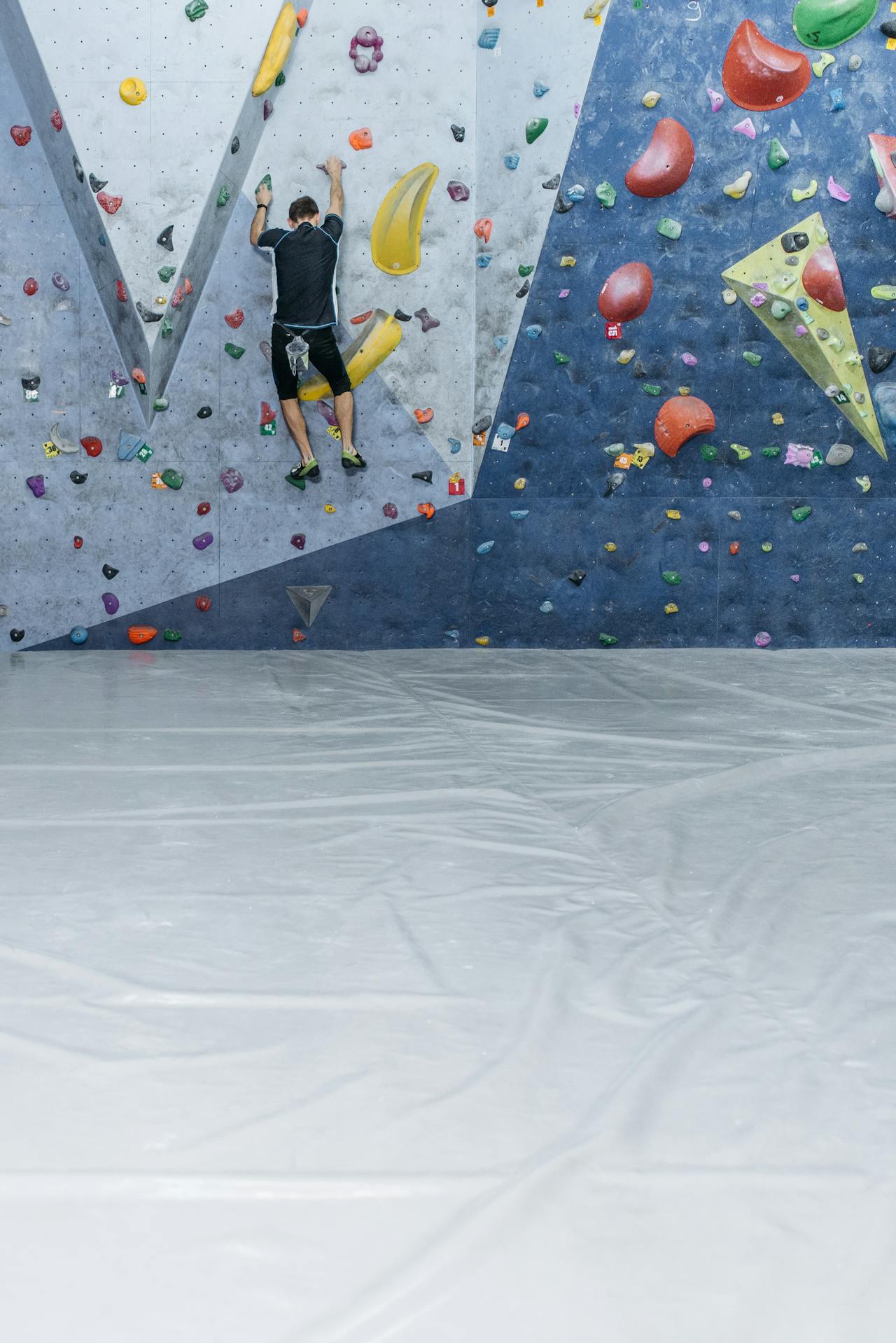It’s almost sending season again, and you know what that means: the perfect conditions to hop back on the proj. When it’s too hot out, you can’t line up enough partners, or you just can’t get back out to the crag, you must figure out ways to train for your outdoor project in the gym.
As an outdoor climber, you know you won’t be able to replicate the exact climb inside. Even as a route setter, you can only come so close to creating the same sequence of moves on a rock. Sometimes, the holds aren’t quite right, or the angle of the wall isn’t replicable.
That shouldn’t stop you from training for your outdoor project in the gym, though. You can do so in a few ways, but you must buckle down and keep at it if you want to send your project this season. Check out these three ways below to train for your outdoor projects in the gym:
1. Analyze and memorize the climb
You must learn every sequence of complicated moves on your project. It would help if you memorized the exact beta for every hold; regardless, you should have the crux beta dialed.
Understanding the hardest sequence of moves will tell you what to focus on in your training. Is the crux crimpy, pinchy, compression-ey? Is the climb-on slab a dead vertical wall, or is it overhung? If it is overhung, how overhung is it? 30°, 35°, 40°? More!?
As far out as it sounds, you must understand the rock. Keep a journal of the moves and write them down after you’re lowered off the wall. Write out how each hold and move feels and include as much description as possible.
Writing out the beta will help solidify the moves in your mind. You may hate exams, but treat your project like an exam you must pass- study for it!
2. Replicate as best you can
For those with a home wall, you can recreate any climb sequences to practice. For those without a home wall, which may be most climbers, you’ll need to get a little creative with your training.
There are some incredible boards out there to train on, such as a Moonboard, a Kilterboard, and a systems board, which you may have access to at your gym. A spray wall is also a great tool to help you train for your outdoor project. While you may not get to replicate your project exactly, you can replicate what is needed to perform on it.
First, determine the angle of the wall that your project is on. Since you won’t be able to replicate your project exactly, you should train on a slightly more overhanging wall. This will force your body to get comfortable with an even harder angle than your project.
Next, choose what holds you must train on. If your project’s crux has crimps, train on crimps; if the crux has slopers, so on. Climbing on these holds at a steeper angle than your project will help you build the strength to get after it outside.
Lastly, think about the footholds! Since you’ll be training on a steeper angle, begin with whatever large footholds are available. Once you complete the sequences at a steeper angle, use worse feet. There are always worse feet.
3. Stay consistent!
Any climber only sends harder by working hard and staying consistent. Schedule your week so you’re training for your project at least 2-3 times a week. On your off days, consider strength training to improve any weakness areas. Your core will thank you for the workouts if you’re climbing on a steep wall.
Staying psyched while training is no easy feat. Remember that if you truly want something to send at your limit, you must work for it if you can. Get out to your project between training sessions to keep your motivation high!
Progress isn’t linear, so try not to get down if you’re not performing well during a session or hitting a plateau. Instead, redefine what progress means to you and focus on the subtle differences in your training.
Instead of focusing on not sticking a move you’ve been struggling with, focus on minute details you have improved. Reached the hold with less effort? Hit it with three fingers instead of two? Held on for a millisecond longer than last time? Progress!







